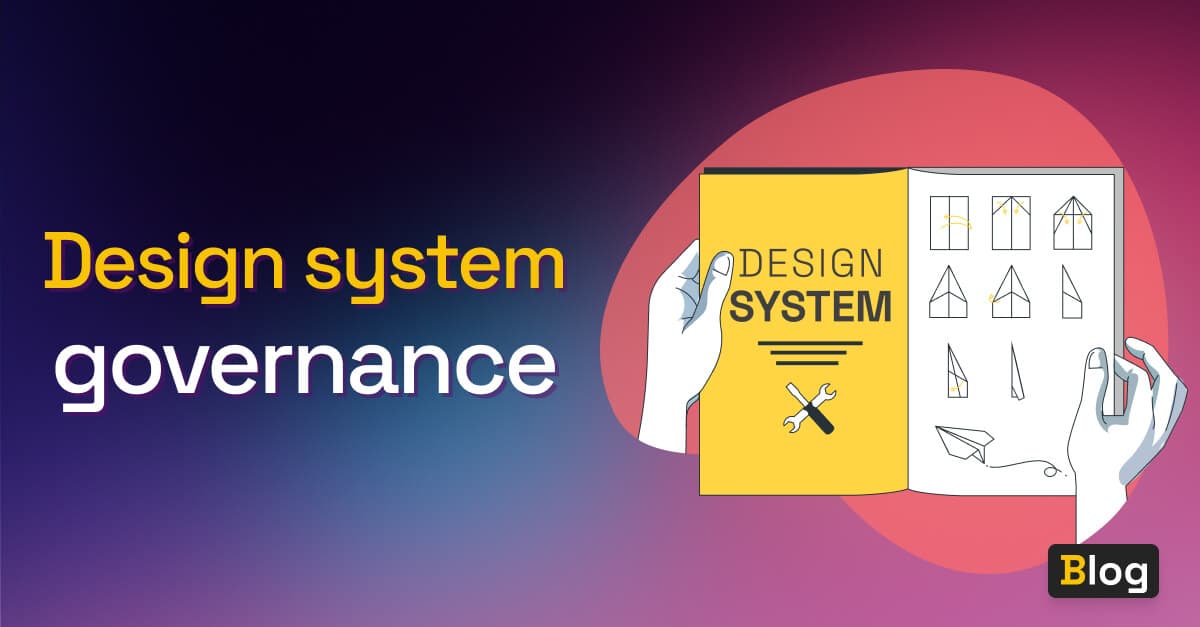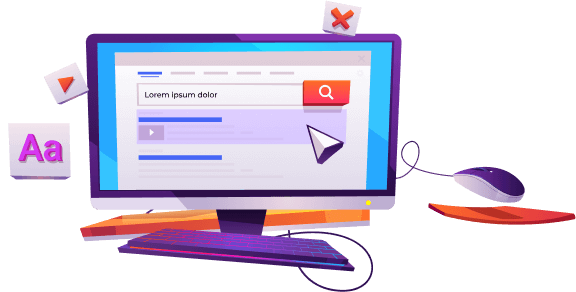
Governance in Design System
Everything in today’s world is constantly evolving, including the design system. But are we absolutely sure that our design system is adaptable enough to handle new changes, reliable enough to face new problems, and scalable enough to accommodate further modifications? Because of all of these questions, the topic of Governing our Design System has gotten a lot of attention. Nevertheless, some people believe that design system governance is a barrier to rapid growth and scalability. However, the majority agrees that it boosts scalability and creativity if executed correctly with consistency. This article will take you from the challenges that a design system faces to how design system governance can help you overcome them.
Challenges
Poor Communication and Weak Documentation
Communication is the glue that holds the design system together; however, effective communication between different departments has become a major issue for the company to address. Before investing our time and efforts into writing a design system, we need to know and understand the organisation’s pain points and how can we blend them using the design system. Discuss what their needs and expectations are. It will help avoid roadblocks in the workflow.
Since communication can lead to the loss of important aspects, document the meeting notes. When communicating and documenting the vision, it’s important to be clear about the organisation’s goals. To make your design system serve the needs of multiple product teams, outline the main design principles.
Backlight takes care of your documentation headache by providing support for various documentation frameworks such as MDX, mdjs, and even Astro .
Different Individuals, Different Mindsets
A design system’s full potential is often hindered by internal disputes. Sometimes, developers or designers often use their own version of tokens and components. This hesitancy can harm the product’s use and consistency and cause unnecessary disputes. Rather than following one’s own intuition, follow the vision and standards set by the organisation. A well designed governance plan should be followed to restrict this behaviour. It brings value to the product in the longer term.
While Backlight is a code-centric tool, designers love using it too. Figma plugin helps designers generate UI kits and maintain libraries when the code changes.
Scattered Toolkits
For a good design system there should be a single source of truth that everyone can refer to, whether from the design team, engineering team or the product team. Maintaining a single source is quite challenging. Also, avoid using overly complicated design system components. It should be easy to use each design system component to build more complex blocks. It will allow the system to scale. A design system is more than just coding. It facilitates the communication between cross-product trio: design, engineering, and product management.
Backlight includes a number of starter kits to help you get started with your design system at a lesser cost.
Establishing Design System Governance Standards
How do you define design system governance standards? How do we know we are on the right track of developing and designing? Designers rely on their own set of principles when it comes to evaluating the quality of design. But as the team expands, it becomes cluttered and difficult to accommodate different people with their own unique approaches and ideas. This is when the design system governance standards come to the rescue.

A successful design system is reusable to a large extent. Every team faces the same problem - creating components focused on a single-use case. It forces the designers and developers to develop and write new components every time. Build components that are not limited to single-use cases but can be tweaked and extended to work in various situations. Avoid having dependencies. Consider how a new component will work across multiple platforms.
Another important standard that needs to be counted is accessibility. Having accessibility in design pattern directly accelerate the growth of the product. You can read more about the importance of accessibility in design systems by Thais, Design Lead at DivRiots.
Also, there is a massive need for people who can provide honest reviews around the product design and scheduling brain trust meetings can be very helpful. It offers people the freedom to be innovative by removing authority from brain trust meetings. As the design system evolves, we need a well-defined process to manage the contribution workflows. The system should be open, collaborative and simple to use.
Documentation and Communication
Documentation and Communication are the two primary pillars of a well-designed system. Having roadmaps, meeting notes, and well-written scripts for the design system’s components and tokens helps accelerate the product growth. They provide a variety of functions for both the team and the stakeholders. They assist a team in planning and prioritising the product’s subsequent rollouts.
Well curated roadmaps improve communication and collaboration among teams and departments as they can benefit every product release. It’s a strategic plan in timeline format for team members to visualise each initiative and milestone, thus creating transparency and managing expectations. During meetings, writing critical information can help significantly to get better outcomes. Make sure to have an agenda before scheduling meetings.
Incorporating the contribution and governance model into your design system, documentation acts as a defence against a scattered product. For a beginner, component design and coding might be a subject of concern. And it can be difficult for someone to use an already built component if there is no proper documentation available to guide. Well written documentation can help and give a head start to new members. A style guide allows you to tie everything together and develop an understanding of component usage and purpose.
Backlight: all-in-one design system solution
The purpose of design system governance is to gather all the required parts and build solutions that are consistent across the entire product. Design system teams have a lot on their plate, whether it’s designing and producing assets or writing documentation. It would be difficult to collect, prioritise, and act on comments and new ideas if there was no governance mechanism in place.
Want to speed up your design process? 🤫
Backlight empowers front-end teams to build and ship great design systems. A unique, all-in-one design system solution. For developers, loved by designers.
Backlight bridges the gap between design and code by establishing a single source of truth, ensuring that designers and engineers always use the same tools.
Backlight embraces collaboration across all disciplines. Forget tickets and manual updates. A visually-organised component library, instant sharing and live documentation mean anyone can contribute to your design system.
